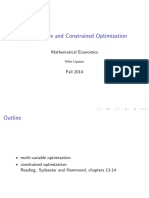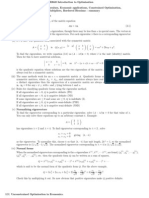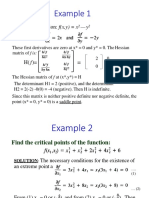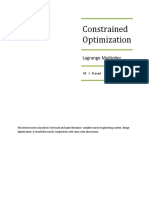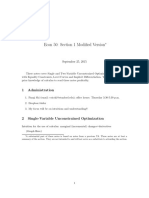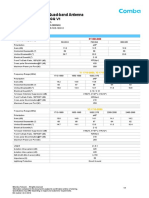0% found this document useful (0 votes)
27 views11 pagesConstrained Optimisation
Constrained optimization involves optimizing an objective function while adhering to constraints on the variables. The document outlines first and second-order conditions for maximization and minimization, including the use of the Lagrange method for utility maximization under budget constraints. Additionally, it discusses the bordered Hessian and its role in determining the definiteness of the second-order conditions in multi-variable optimization problems.
Uploaded by
Nabanita ChatterjeeCopyright
© © All Rights Reserved
We take content rights seriously. If you suspect this is your content, claim it here.
Available Formats
Download as DOCX, PDF, TXT or read online on Scribd
0% found this document useful (0 votes)
27 views11 pagesConstrained Optimisation
Constrained optimization involves optimizing an objective function while adhering to constraints on the variables. The document outlines first and second-order conditions for maximization and minimization, including the use of the Lagrange method for utility maximization under budget constraints. Additionally, it discusses the bordered Hessian and its role in determining the definiteness of the second-order conditions in multi-variable optimization problems.
Uploaded by
Nabanita ChatterjeeCopyright
© © All Rights Reserved
We take content rights seriously. If you suspect this is your content, claim it here.
Available Formats
Download as DOCX, PDF, TXT or read online on Scribd
/ 11





















